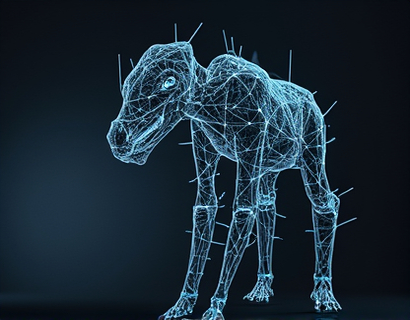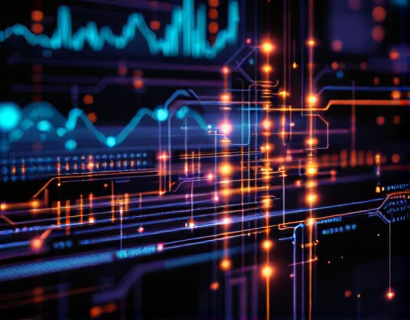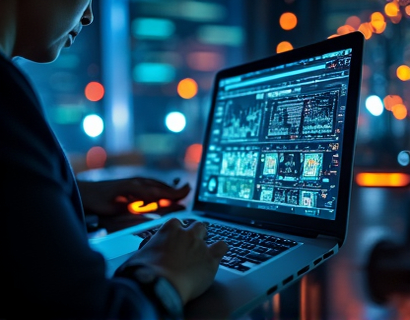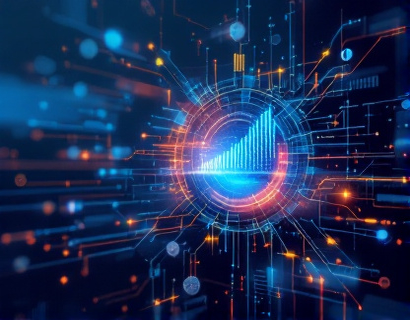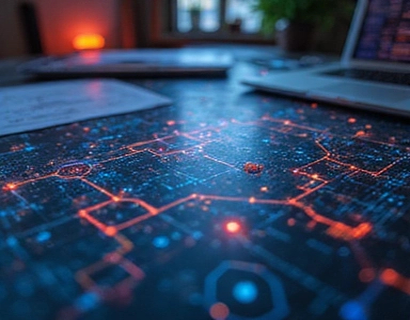Next-Gen Image Authenticity Verifier: Ensuring Trust in a World of AI-Generated Content
The rise of artificial intelligence has brought about unprecedented capabilities in content creation, but it has also introduced significant challenges in verifying the authenticity of visual media. In an era where AI-generated and altered images can be nearly indistinguishable from real ones, the need for advanced tools to ensure the integrity of digital content has become paramount. This article delves into the importance of next-generation image authenticity verifiers and how they are revolutionizing the way professionals across various fields approach visual content assurance.
Image authenticity verification is no longer a niche concern but a critical aspect of digital media management. Professionals in digital media, content creation, brand management, security analysis, legal compliance, journalism, and education are increasingly relying on sophisticated tools to detect and verify the authenticity of images. These tools are essential for maintaining trust, protecting brands, and ensuring informed decision-making in a world where image manipulation is becoming more sophisticated.
The Need for Advanced Image Verification Tools
The proliferation of AI-generated content has made it easier than ever to create convincing fake images and videos. This has led to a range of issues, from misinformation and fake news to intellectual property theft and brand impersonation. The consequences of unverified visual content can be severe, damaging reputations, influencing public opinion, and even affecting legal outcomes. Therefore, there is a pressing need for reliable and advanced methods to verify the authenticity of images.
Traditional methods of image verification, such as manual inspection and basic software tools, are often insufficient against the high-quality AI-generated content of today. These methods can easily be fooled by deepfakes and other advanced manipulations. Next-generation image authenticity verifiers, on the other hand, employ cutting-edge algorithms and machine learning techniques to detect subtle signs of tampering and AI generation.
How Image Authenticity Verifiers Work
Next-generation image authenticity verifiers use a combination of techniques to analyze images and determine their authenticity. These techniques include:
- Deep Learning Algorithms: These algorithms are trained on vast datasets of both real and AI-generated images to identify patterns and anomalies that indicate manipulation.
- Metadata Analysis: Verifiers examine the metadata embedded in images, which can reveal information about the image's creation, modification, and history.
- Fingerprinting: This technique creates a unique digital fingerprint of an image, which can be compared against a database of known authentic images to detect duplicates or alterations.
- Consistency Checks: The verifier analyzes the consistency of elements within the image, such as lighting, shadows, and reflections, to spot inconsistencies that may indicate manipulation.
- Contextual Analysis: By considering the context in which an image is presented, the verifier can assess the likelihood of authenticity based on known facts and patterns.
These advanced techniques enable the verifier to provide a comprehensive assessment of an image's authenticity, offering a level of accuracy and reliability that traditional methods cannot match.
Benefits for Digital Media Professionals
For digital media professionals, the ability to accurately verify image authenticity is crucial. Here are some key benefits:
1. **Enhanced Credibility**: By using advanced verification tools, professionals can ensure that the content they publish is trustworthy, thereby maintaining their credibility and reputation.
2. **Risk Mitigation**: Detecting and preventing the spread of fake or manipulated images helps mitigate risks associated with misinformation and brand damage.
3. **Compliance and Legal Protection**: In industries where compliance with regulations is mandatory, having a reliable method to verify images can provide a legal safeguard against potential lawsuits and regulatory issues.
4. **Informed Decision-Making**: Accurate image verification enables better decision-making by providing a solid foundation of trust in the visual data used for analysis and strategy.
5. **Content Integrity**: Ensuring the authenticity of content is vital for content creators who rely on the integrity of their work to maintain audience trust and engagement.
Applications Across Various Fields
The importance of image authenticity verification extends across multiple sectors, each with its unique challenges and requirements:
Content Creation and Digital Media
Content creators and digital media professionals must ensure that the visual content they produce is genuine and trustworthy. Advanced verification tools help them maintain the integrity of their work, protect their brand, and avoid the consequences of using manipulated images.
Brand Management
Brands are increasingly vulnerable to image-based attacks, such as deepfakes used for impersonation or manipulation. Verification tools help brands monitor and protect their online presence, ensuring that their reputation is not compromised by fake or altered images.
Security Analysis
In the realm of security, the authenticity of visual evidence is critical. Verification tools assist security analysts in examining images and videos related to incidents, ensuring that the evidence used for investigations is reliable and not tampered with.
Legal Compliance
Legal professionals and compliance teams rely on accurate visual evidence for various proceedings. Advanced verification tools provide a robust means to authenticate images, supporting legal cases and ensuring adherence to regulatory standards.
Journalism
Journalists must verify the authenticity of visual evidence to maintain the integrity of their reporting. Verification tools help reporters and editors detect fake news and ensure that the stories they tell are based on genuine content.
Education
In educational settings, verifying the authenticity of images used in research, presentations, and teaching materials is essential. Verification tools help educators and students ensure that the visual content they use is trustworthy and accurate.
Implementing Image Authenticity Verification
Implementing a next-generation image authenticity verifier involves several steps to ensure effective integration and utilization:
1. **Assessment of Needs**: Identify the specific verification requirements of your organization, considering the types of content you handle and the potential risks involved.
2. **Tool Selection**: Choose a verification tool that aligns with your needs, considering factors such as accuracy, ease of use, and compatibility with existing systems.
3. **Training and Education**: Train your team on how to use the verification tool effectively, ensuring that they understand the importance of image authenticity and the capabilities of the tool.
4. **Integration**: Integrate the verification tool into your workflow, ensuring that it becomes a standard part of your content review and approval processes.
5. **Continuous Monitoring**: Regularly monitor the effectiveness of the verification process and update your tools and methods as new threats and techniques emerge.
By following these steps, organizations can establish a robust image authenticity verification process that enhances their overall content management and risk mitigation strategies.
Conclusion
The rise of AI-generated and altered images has created a new landscape of challenges for professionals across various fields. Next-generation image authenticity verifiers offer a powerful solution to these challenges, providing the tools needed to ensure the trust and integrity of digital media. By adopting these advanced verification methods, organizations can protect their reputations, make informed decisions, and maintain the highest standards of content authenticity.






